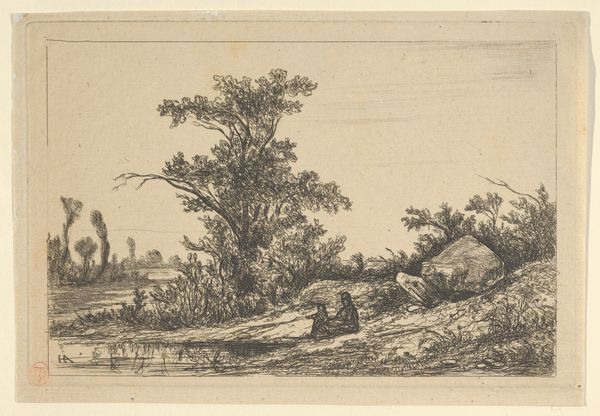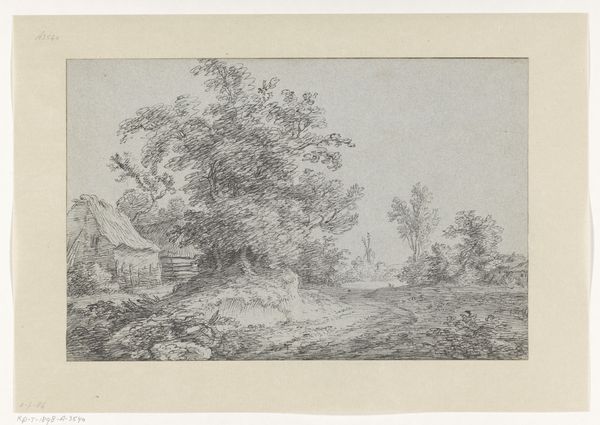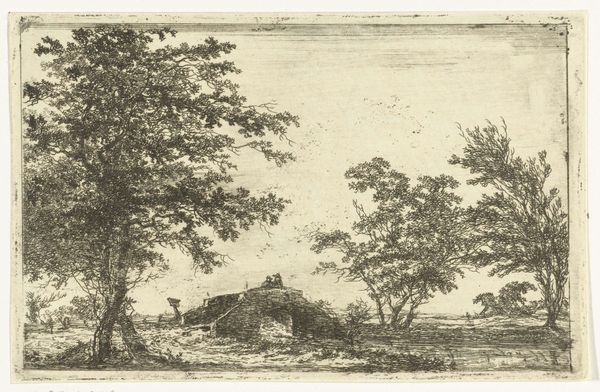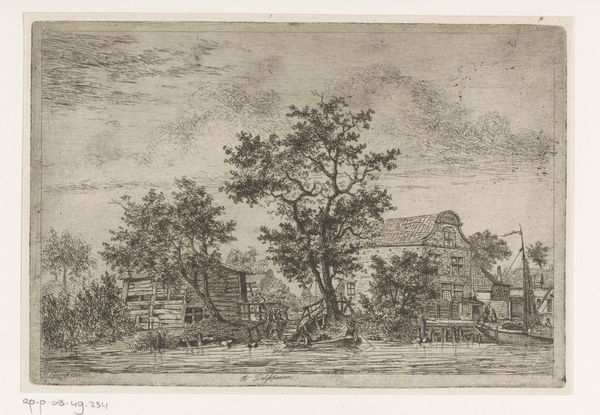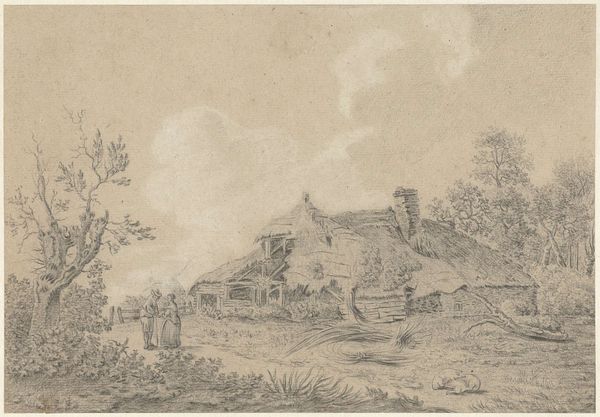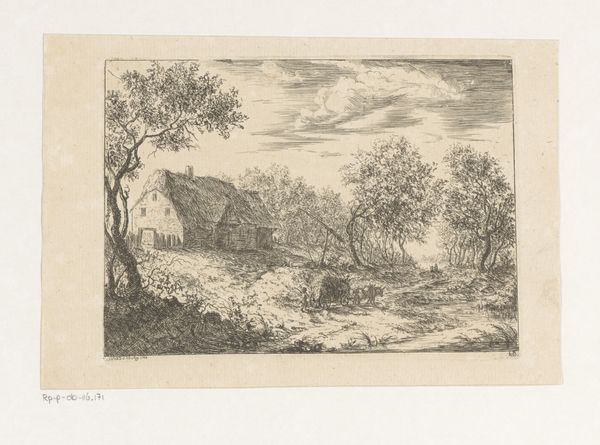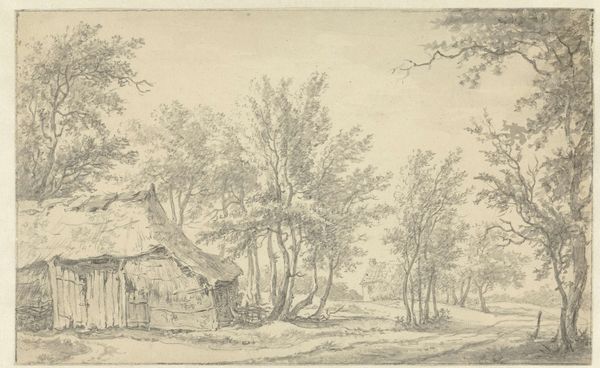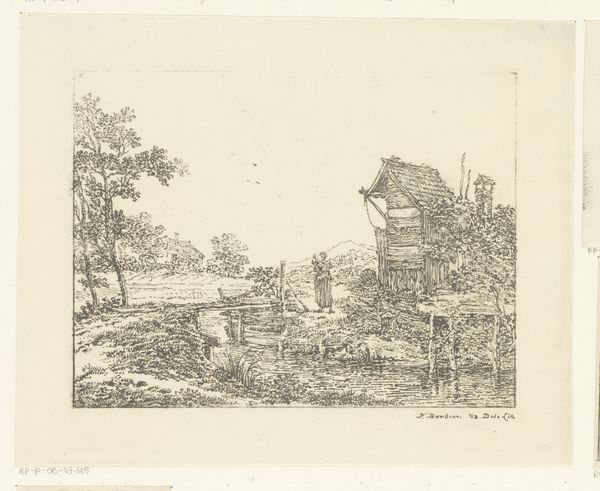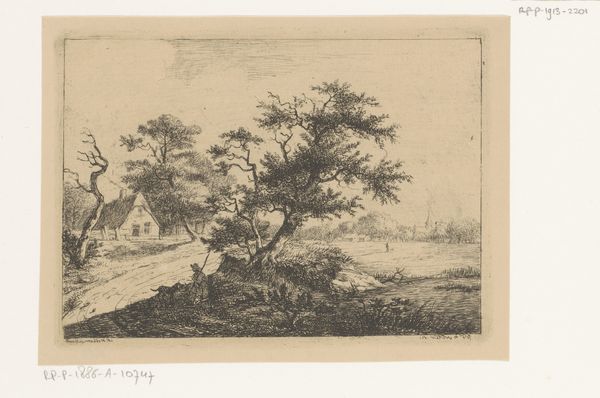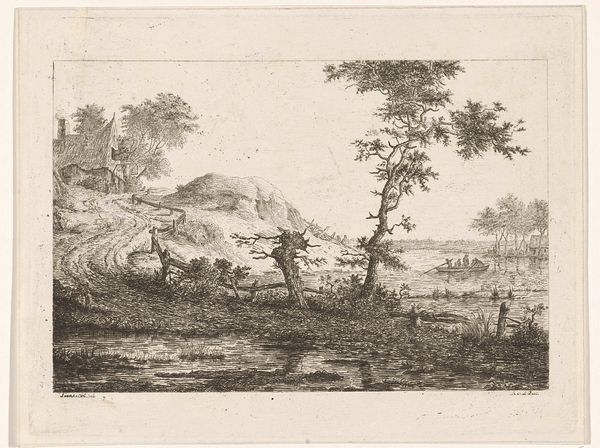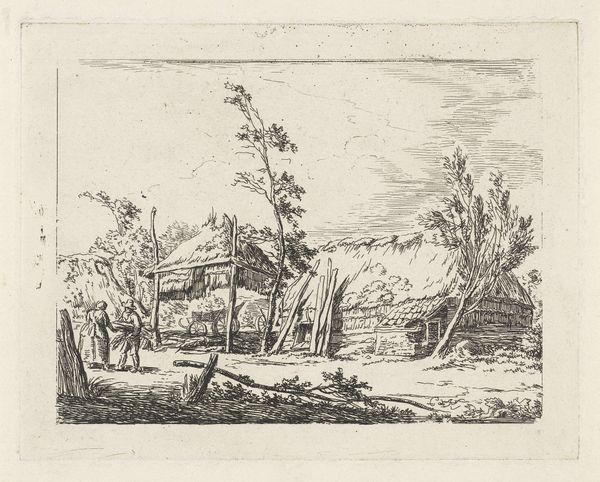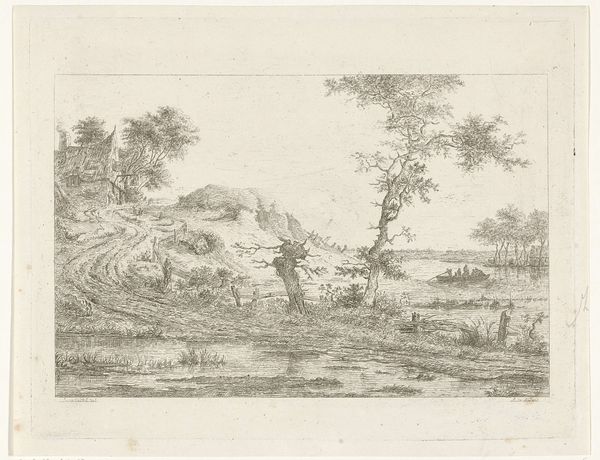
drawing, etching
#
drawing
#
pen sketch
#
etching
#
pencil sketch
#
dog
#
old engraving style
#
landscape
#
figuration
#
romanticism
#
pen-ink sketch
#
pencil work
Dimensions: height 205 mm, width 240 mm
Copyright: Rijks Museum: Open Domain
Editor: Here we have "Landscape with Woman with Basket on Her Head," an etching by Barentie Willem Dietz, from around 1817. The intricacy of the lines creating this pastoral scene is really captivating. What's your take on this landscape? Curator: Well, I see an early 19th-century commodity chain represented here. Think about the materials. The copper plate was mined, refined, and engraved. Paper milled. Ink produced and sold. Dietz, then, becomes a facilitator in this network, transforming raw materials into art for consumption. Consider the social context in which these objects were created. Who bought etchings like this? And what kind of labor was required to produce them? Editor: That's fascinating! I hadn't considered the materiality of the etching process itself as part of the artwork's meaning. The image depicts a rural landscape, but it was made through intense, industrialized processes. How might that contrast speak to its meaning? Curator: Exactly! Look at the division of labor inherent in printmaking. Dietz relies on miners, metalworkers, and papermakers. His "artistic" labor exists because of their physical work. The pastoral imagery contrasts with the industrial methods, suggesting a Romantic idealization of nature at a time of increasing industrialization and perhaps even commenting on those processes. What impact did industrial advancements have on labor when this etching was made? Editor: This makes me appreciate the print on a completely different level! Thanks for pointing out all these details about materials and production; I had a limited view initially, and your insights add so much to the work's layers. Curator: Indeed. By considering these elements, we not only understand art more thoroughly but also perceive our culture more analytically.
Comments
No comments
Be the first to comment and join the conversation on the ultimate creative platform.
